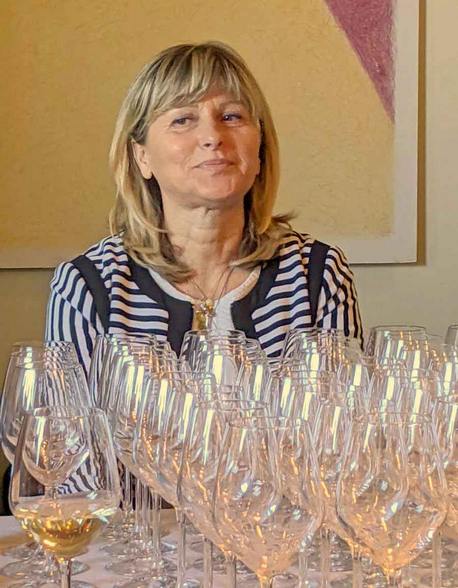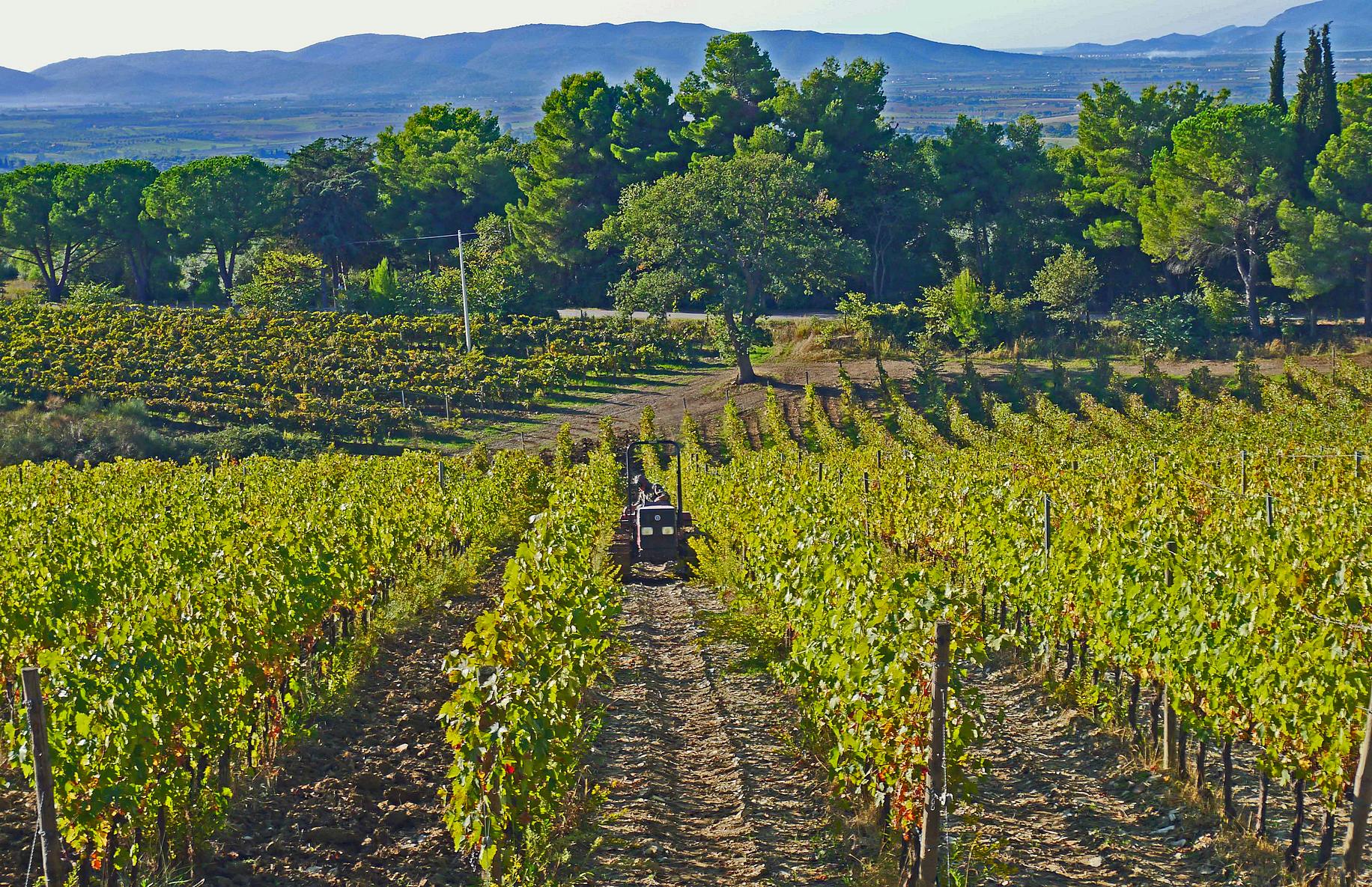You can’t quite see the ocean from the winery at Fattoria di Magliano (Località Sterpeti 10, Magliano; +39 0564 593 040; fattoriadimagliano.it). But if you turn southwest and close your eyes, you can smell the salt air rising from the coast 10 miles away. That maritime influence combines with well-drained soils to produce intensely flavored grapes.
 Founded in 1997 by footwear magnate Agostino Lenci, the winery embodies the expanding possibilities of the Maremma. While the traditional varietals of the region, Sangiovese and Vermentino, represent 80 percent of the vineyards, the winery also has extensive plantings of Syrah, Cabernet Franc, and Cabernet Sauvignon, as well as significant amounts of Petit Verdot and Merlot. From the outset, the winery embraced French grapes and technique as a complement to Tuscan tradition, explains co-owner Nicola Lenci (right). “My father came to the Maremma because he thought the region could showcase Tuscan varietals with French finesse in fruit-forward wines.”
Founded in 1997 by footwear magnate Agostino Lenci, the winery embodies the expanding possibilities of the Maremma. While the traditional varietals of the region, Sangiovese and Vermentino, represent 80 percent of the vineyards, the winery also has extensive plantings of Syrah, Cabernet Franc, and Cabernet Sauvignon, as well as significant amounts of Petit Verdot and Merlot. From the outset, the winery embraced French grapes and technique as a complement to Tuscan tradition, explains co-owner Nicola Lenci (right). “My father came to the Maremma because he thought the region could showcase Tuscan varietals with French finesse in fruit-forward wines.”
Experimentation is in the winery’s DNA. For example, the most traditional wine of the immediate area is Morellino di Scansano. Fattoria di Maglione’s HEBA (a Morellino di Scansano DOCG Biologico), contains 5 percent Syrah atop the local clone of Sangiovese to give it more backbone. In contrast to traditional aging of Morellino in giant barrels, HEBA spends six months in unglazed cement eggs and six months in bottle before release. The result is a distinctive wine with bright cherry notes, concentrated fruit, soft tannins, and a luscious thickness.
Wines that straddle tradition and innovation
 Much of the credit for the unusual wines at Fattoria di Magliano goes to oenologist and consulting winemaker Graziana Grassini (grazianagrassini.it). A protégé of Giacomo Tachis (the oenologist who practically invented Super Tuscan wines as a category), Grassini aims for a combination of freshness, elegance, and acidity.
Much of the credit for the unusual wines at Fattoria di Magliano goes to oenologist and consulting winemaker Graziana Grassini (grazianagrassini.it). A protégé of Giacomo Tachis (the oenologist who practically invented Super Tuscan wines as a category), Grassini aims for a combination of freshness, elegance, and acidity.
Her take on Vermentino is a golden wine called called Pagliatura. Fermented in steel, the wine spends three months on the lees. It is strikingly bold Vermentino—full-bodied with rounded acid and a distinct salinity. It’s a perfect complement to the aged pecorino cheeses made farther inland. (See next post.)
The other reds nod both to tradition and to the future. Sinarra is a modern Sangiovese with traditional roots. Made from selected bunches in the winery’s best vineyards, it has a nose of violets and red currants, an intense flavor with overtones of red and black fruits, and a structure that pairs well with tomato sauces and cured meats. Altizi, named for the farmer who sold the vineyard to the Lenzi family, is a marvel of full-bodied, aromatic Cabernet Franc with notes of blueberry, anise, cassis, and black raspberries. Juicy without being jammy, it has strong overtones of rosemary and thyme.
Grassini’s finesse really shows with Fattoria di Magliano’s Bordelais blend, Poggio Bestiale. The blend varies, but Cabernet Sauvignon and Cabernet Franc make up about two-thirds, Merlot a quarter, and Petit Verdot the rest. Each grape is vinified separately. Even in rainy years like 2014, these grapes do well in the Poggio Bestiale vineyard thanks to good aeration from maritime winds. (The vines are planted with a tilt to the southwest, source of the prevailing winds.) Spicy and herbal, Poggio Bestiale has the intense raspberry and cherry scents that mark the wine as Tuscan rather than French.
Visit Fattoria di Magliano—or stay the night
You can make arrangements for a tasting and cellar tour. See www.fattoriadimagliano.it/en/visit-and-taste/ for prices and an online booking form.
The winery has embraced agritourism since 2015 and is a popular stop for bicycle tourists. The B&B lodging has two self-contained apartments and 13 single and double rooms. Prices vary with season. To book, call +39 0564 593 040 or email reception@fattoriadimagliano.it.

